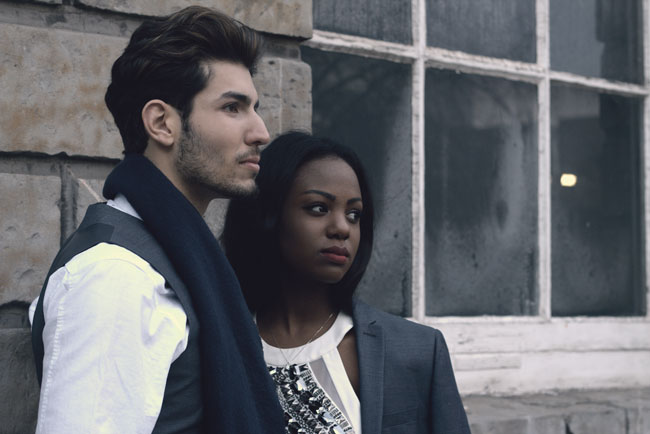
The Trinity Ball can be traced as far back as the 1830s, originating from a British tradition known as the May Ball. Trinity chose to adopt this widespread practice of holding a ball towards the end of the academic year and appropriate it as a College-specific event, with the first of Trinity’s balls taking place in 1959. In terms of clothing, the dress code of the time was preferably white tie for men, with black tie accepted without being the norm. Women’s formalwear was mostly comprised of low heels, with strapped dresses and wide skirts. The ball’s night-time style has undergone a series of evolutions over the last 60 years. In particular, the late 1990s ushered in a style revolution, brought on by the inevitable influences technology has had on how we wear our clothes.
In the early to mid-1990s, the accepted trend for men was to wear tuxedos. At the time, suit pants were baggy at the leg and the trend was for bright waistcoats or cummerbunds. Bright dickie bows were the tie of choice, straight neckties being eschewed at such a formal event. The girls wore dresses: long skirts with corset type tops, puffy sleeves or strapless – yet very modest by modern standards. Velvet, satin and floral prints were predominant patterns, particularly in the early 1990s – coming hot off the heels of the 1980s. Eithne O’Brien, classical studies alumnus who attended Trinity in the mid 1990s, spoke to The University Times and revealed that, most of the time, first-year students simply rolled out their debs dresses for the night. This is a practice which is strictly avoided today – the culture that image-orientated social media site Instagram has created dictates that we cannot wear outfits more than once.
There was also something of a class divide that was more evident then than it is now. Those who did have money tended to be from affluent areas such as Dublin 4, or students coming from Britain to study. Moreover, there was a mild trend of having your look somewhat defined by your course. Attendees that studied English, drama, philosophy or classics, for example, were more experimental in their style. The men would often sport capes, meanwhile women would often compliment their dresses with “vintage” items such as thick fur jackets.
Despite its status as a mini-festival, the ball has retained its look – men will show up in black tie by the hundreds, while women retain the practice of wearing all manner of dresses
O’Brien also makes the rueful observation that “polka dot tights were big at one stage”. Today, class division is less apparent when it comes to your Trinity Ball outfit, as shoppers in Dublin have access to a plethora of cheap clothes on online retail platforms. There is more of a cross pollination between courses, with students from all academic backgrounds testing the waters of eccentricity.
Despite the course culture trends and the concentration of wealth in the locales of some students, Trinity Ball from the 1980s through to the 1990s was a comparatively low-maintenance affair when you stand it next to the modern incarnation of the ball. No one got a spray tan for instance – any Irish girls who showed up with a bit of colour would generally be the wealthier girls from D4, they having access to sunbeds. “No one got professional make up – some may have gotten their hair done”, O’Brien notes. “Nail bars had not yet hit Ireland and beauty salons were too expensive for Joe/Jane public”. Makeup looks at Trinity Ball are now at an all-time high. Students have access to more salons, cosmetics and beauticians than ever before, as well as online tutorials on YouTube.
The current ball is less of a formal event and more of a small music festival in fancy dress. Despite its status as a mini-festival, the ball has retained its look – men will show up in black tie by the hundreds, while women retain the practice of wearing all manner of dresses. One can only wonder what the future holds for the event: if the event itself undergoes any more change, departing further and further away from the idea of a traditional “ball”, one has to wonder whether the iconic, dressed-up look of the Trinity Ball will remain.






